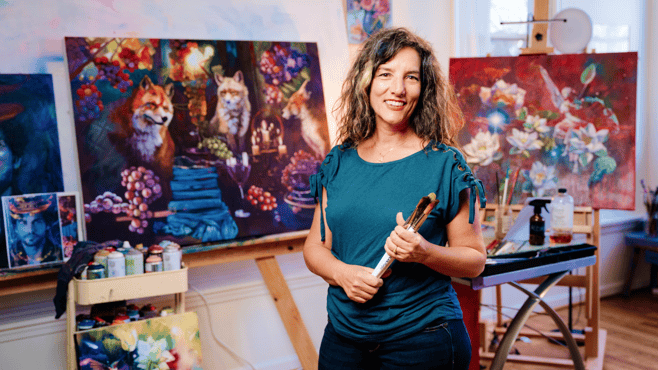
Pricing Art: Balancing Value, Emotion, and Market Demand
For many artists, pricing artwork is one of the most confusing—and emotionally loaded—parts of the creative journey. It's not just about setting a number; it's about honoring the heart and soul poured into a piece while also navigating the practical realities of competition, materials, and customer expectations.
Early in their careers, many artists struggle with pricing. There’s often hesitation, self-doubt, and the temptation to undercharge in hopes of making a sale. But with time and experience comes clarity. One effective strategy that has helped countless artists find consistency and confidence is the square-inch pricing model. Starting with a base rate—often something like 70 cents per square inch—and adjusting according to complexity, this method brings structure to an otherwise ambiguous process.
More importantly, it shifts the focus away from how long a piece took and onto what really matters: the value it delivers. It's not just about hours logged in the studio. The emotional energy, artistic vision, and storytelling embedded in each work are what truly elevate its worth.
💡 Pricing your art isn't about tracking time—it's about honoring the emotional and creative energy that makes your work meaningful.
🎨 Want to turn your passion for art into a thriving career?
Kickstart your journey with the Mastery Program—a one-year course designed to help you master your craft, find your voice, and start selling your art professionally.
Debunking the Time = Value Myth
Emotional effort and creative depth often matter more than the time spent. A small, expressive piece that connects deeply with a viewer can hold more value than a massive canvas that took weeks.
This shift allows artists to price based on impact, not just effort, and empowers them to see their art as a reflection of their story—not a product of the clock.
7 Practical Tips for Pricing Your Art
1 - Use a Square-Inch Pricing Structure
Start with a base rate (like $0.70/sq. inch) and adjust based on detail, complexity, and medium.
2 - Avoid Underpricing
Don’t fall into the trap of competing on price. Lowering your value to match the market often does more harm than good.
3 - Research Local Pricing Trends
Know your market. What are other artists charging in your area or niche? Let data guide your decisions—not just emotion.
4 - Tell the Story Behind the Work
A compelling narrative can significantly increase the perceived value of your art. Buyers connect with stories—not just brushstrokes.
5 - Stop Pricing Based on Materials
Art supply costs don't determine value. Your skill, experience, and the emotional weight of your work matter more.
6 - Raise Prices Gradually
Consider strategic price increases over time. Test the market, assess demand, and evolve your pricing as your career grows.
7 - Master Your Presentation
High-quality photos, framing, titles, and descriptions all elevate your work. Great marketing makes great art even greater.
Why Emotional Connection Is Your Superpower
In a world increasingly influenced by AI and digital creation tools, your humanity is your greatest asset. An artist’s story, process, and perspective breathe life into the work—and that’s something no algorithm can replicate.
Your personal experiences, struggles, triumphs, and creative breakthroughs all infuse your art with a depth that can’t be manufactured. Share that.
Bonus: Smart Pricing Tactics to Try
-
Tiered Pricing: Offer different sizes or formats of your work at varied price points to reach wider audiences.
-
Value Anchoring: Position higher-priced works alongside mid-range ones to subtly increase perceived value.
-
Skill Justifies Price: As your technique evolves, so should your prices. Your growth deserves recognition.
-
Build Your Brand: Marketing is not an afterthought. It’s a key to unlocking visibility and value.
Final Thoughts: Value Beyond the Canvas
The real message of this podcast episode is clear: your art is valuable because you are. When you take the time to align your pricing with your worth, communicate your story effectively, and present your work with confidence, you elevate both your career and your creative joy.
So whether you're just starting out or looking to level up, remember—pricing isn’t just about numbers. It’s about knowing your value and owning it.
✨ To The Next Level...
If you're serious about growing as an artist and turning your passion into a sustainable career, the Mastery Program is your next step. This comprehensive, one-year course is designed to take you from wherever you are now—beginner or experienced—and help you become a confident, professional artist.
You'll learn everything from foundational drawing and oil painting techniques to mixed media, personal style development, and the business skills needed to market and sell your art successfully. By the end of the program, you’ll have a strong portfolio, a clear artistic voice, and a solid understanding of how to navigate the art world with confidence.
👉 Explore the Mastery Program and start building the creative career you’ve always dreamed of.

